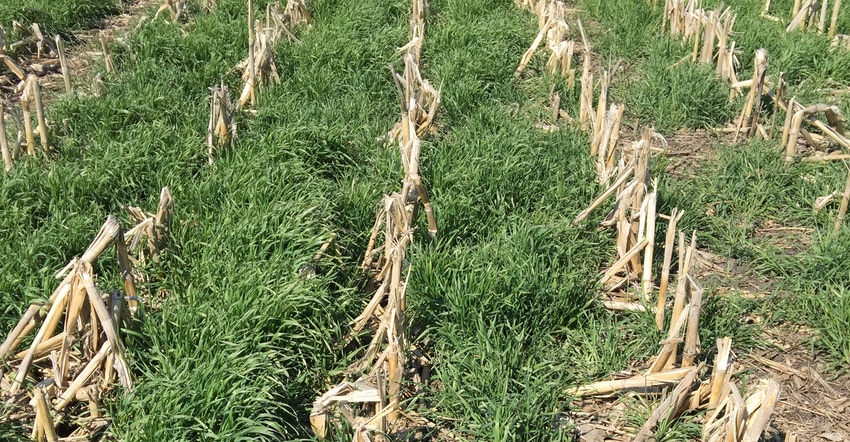February 19, 2019

If you have cover crops, it’s time to review your plan for terminating them this spring. More acres in Iowa are being seeded with cover crops every year. Cover crops offer many agronomic and environmental benefits. An important consideration when planting cover crops in any cropping system is their termination. Cover crops are usually terminated using one of three methods, each has advantages and disadvantages.
The most common termination method is using herbicides. The effectiveness of terminating covers with herbicide depends primarily on:
cover crop species and its growth stage
herbicide and rate used
the environment
Some cover crop species, such as cereal rye, are easier to control with appropriate herbicide treatments. Red clover, winter wheat and annual ryegrass can be more difficult to kill. Typical cool spring temperatures along with dense rapidly growing canopies can present challenges.
The easiest termination method with a herbicide is to use glyphosate. It is recommended to use a 1-pound acid equivalent rate of glyphosate, which could mean rates of 28 up to 42 fluid ounces, depending on the formulation.
Many glyphosate formulations contain 3- to 4.5-pound acid equivalent per gallon; check the product label to determine the appropriate application rate. Some formulations may also require spray additives such as surfactants and AMS to improve effectiveness.
Timing of application
Glyphosate is a translocated herbicide, so it’s important to apply it when plants are actively growing. Ideally, this would be on a sunny day when temperatures are above 60 degrees F and night temperatures remain above 40 degrees. ISU researchers generally recommend terminating a cover crop 10 to 14 days prior to planting corn to protect yield. That time frame is less critical when planting soybeans.
Crimping or rolling cover crops can also be an effective termination method. An advantage of this method is it reduces dependency on herbicides during corn and soybean production. Effective termination of cover crops using this method depends on the timing of crimping or rolling for the cover crop species present.
For cereal rye, it’s recommended to wait until the rye has shed pollen (anthesis) to get a consistent kill. Other cover crops that can be terminated with crimping include barley and triticale at milk or dough stage, as well as hairy vetch when it’s at full bloom. Cover crop mixes can be a challenge to terminate since different species may be at different growth stages.
A third method of terminating cover crops is with tillage. Tillage may be an option better suited for some farm operations over others. Multiple tillage passes may be needed to successfully terminate the cover crop, especially with some species of clover. Tillage may reduce the benefits of planting cover crops in terms of soil health and erosion protection.
Regardless of what termination method you choose, it’s important to have a plan in place to minimize problems this spring. Following cover crop termination, check fields for regrowth or skipped areas that need further attention. This will allow for successful cover crop termination, a good planting base and, hopefully, a successful cropping season.
Michel is an ISU Extension field agronomist covering southeast and south-central Iowa. Contact him at [email protected].
About the Author(s)
You May Also Like






